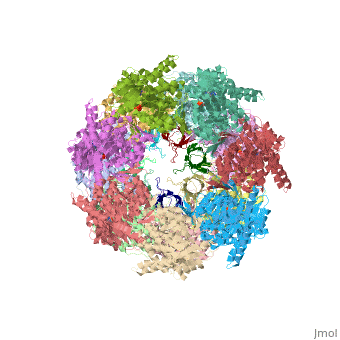Chaperones are proteins that are involved in the non-covalent folding and unfolding of other macromolecules. It exists both in prokaryotes and eukaryotes. Some chaperones are constitutively expressed in the system however, there are other chaperones that are expressed only in response to an external stimulus or stress such as heat and therefore they are referred to as heat shock proteins.
Function
Chaperones bind to the newly synthesized proteins helping them acquire their properly folded 3D structure [1] Besides, chaperones help in targeting the native proteins to their respective organelles [2][3] The first identified chaperones were the histone chaperones that are continously involved in histone metabolism thus regulating genome function, stability and identity[4]. Many protozoan parasites such as Plasmodium falciparum requires these proteins for cytoprotection [5] [6]Chaperones actively participate in the maintenance of proteome integrity, and protein homeostasis (proteostasis) which requires a syncrhonization in various chaperones tuning the process [7].
Disease
Chaperones are instrumental in protein folding processes. Any alteration in this process leads to protein aggregation and formation of inclusion bodies. Protein misfolding results in various diseases as summarized in the following table:
Table 1: Neurodegenerative diseases and protein deposits [8]
Disease Inclusion Abnormal protein
Alzheimer disease Extracellular neuritic plaque Aβ peptide
Cytosolic neurofibrillatory tangles Tau
Parkinson disease Lewy bodies α-synuclein
Familial amyotrophic lateral sclerosis Intracellular inclusions SOD1
Huntington disease Nuclear, cytosolic inclusion Huntingtin
Spinocerebellar ataxia 1, 2, 3 Nuclear inclusions Ataxin 1, 2, 3
Spinobulbar muscular atrophy Nuclear inclusions Androgen receptors
Relevance
Structural highlights
This is a sample scene created with SAT to by Group, and another to make of the protein. You can make your own scenes on SAT starting from scratch or loading and editing one of these sample scenes.

